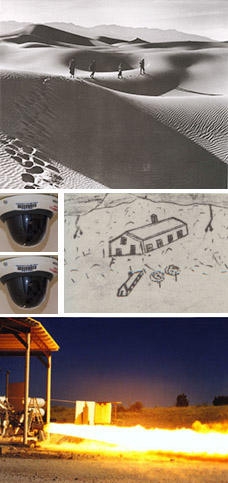
a question mark which symbol
izes the unknown
results and the secrecy surrounding the project
. The lightning bolt extends
down to split a yellow atom, which re
presents atomic fission
and the expecte
d success of
the test. A red and blue star in the center of the question mark is the insignia for the Army Service Forces to which soldiers working on the Manhattan Project were assigned. Trinity Site July 16, 1945 "The effects could well be called unprecedented, magnificent, beautiful, stupendous, and terrifying. No man-made phenomenon of such tremendous power had ever occurred be
fore. The lighting effects
beggared description. The whole country was lighted by a searing
light with the intensity many times that of the midda
y sun
."
B
rig. Gen. Thomas Far
rell
A national histori
c landmark on White Sands Missile Rang
e--www.wsmr.army.rnil
Radiation Ba
sics
Radiation come
s from the nucleus of
individual atoms. Simp
Program Development Division
le atoms like oxygen
are ver
y stable
. Its nu
cleus has eight
protons
an
d eight neutrons and holds together well.
The nucle
us of a complex atom like uranium is not a
New Mexico Tech/s sta
801 Leroy Place
ble. Uranium has

